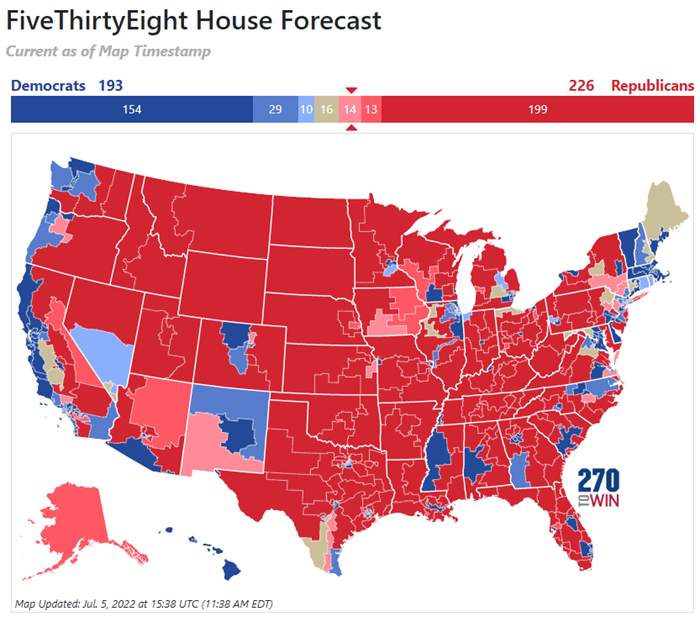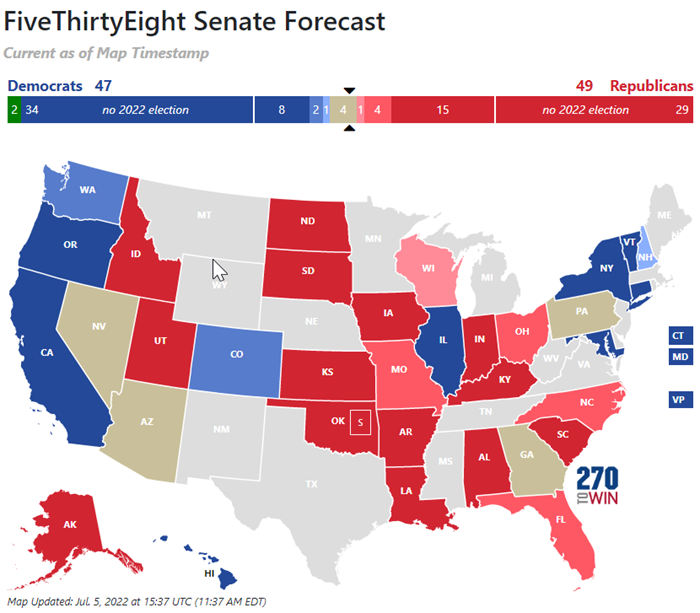Fivethirtyeight Presidential Polls: The Ultimate Breakdown For Political Junkies
Political polls have always been the lifeblood of election season, and when it comes to presidential elections, fivethirtyeight presidential polls are the name everyone trusts. If you're diving into the world of politics or just trying to make sense of the chaos, FiveThirtyEight is where you want to be. Their data-driven approach and crystal-clear analysis make them stand out in a crowded field of political commentators.
Now, let’s be honest, election predictions can be a wild ride. One minute you think you’ve got it all figured out, and the next, the numbers flip like a pancake on a griddle. That’s why FiveThirtyEight’s presidential polls are so crucial. They don’t just throw numbers at you; they break it all down in a way that even your grandma could understand. And trust me, when it comes to politics, clarity is gold.
Whether you're a hardcore political analyst or someone who just wants to know what’s going on, FiveThirtyEight’s presidential polls are your go-to source. So, buckle up, because we’re about to deep-dive into the fascinating world of data, predictions, and everything in between. No spoilers here—just pure, unfiltered insights.
Let’s get one thing straight: FiveThirtyEight doesn’t just spit out random numbers and call it a day. Their method is rooted in science, data, and a whole lot of number crunching. Think of it as a math equation, but instead of x and y, you’ve got voter preferences and electoral college projections. And that’s what makes their presidential polls so reliable. But more on that later.
Table of Contents
FiveThirtyEight Methodology: How It Works
FiveThirtyEight’s Accuracy Record
FiveThirtyEight’s Role in the 2020 Election
State vs National Polls: Which One to Trust?
Common Mistakes in Poll Analysis
Conclusion: Why FiveThirtyEight Stands Out
What is FiveThirtyEight?
FiveThirtyEight is not just another political website; it’s a data powerhouse that has redefined how we consume and interpret political information. Founded by Nate Silver back in 2008, it quickly became a go-to source for election predictions. What started as a humble blog during the 2008 presidential election has evolved into a full-fledged platform covering everything from sports to economics, but its bread and butter remain political polling.
The name "FiveThirtyEight" itself is a nod to the total number of electoral votes in a U.S. presidential election. And that’s exactly what they do—they break down those 538 votes into bite-sized chunks of information that are easy to digest. Whether it’s presidential polls, congressional races, or even gubernatorial elections, FiveThirtyEight has you covered.
But here’s the kicker: they don’t just report the numbers. They analyze them, dissect them, and present them in a way that makes sense to the average Joe. That’s why their presidential polls have become such a big deal in the political world.
FiveThirtyEight Methodology: How It Works
Breaking Down the Numbers
So, how exactly does FiveThirtyEight come up with their presidential polls? It’s a combination of factors, but at the heart of it all is their proprietary model. This model takes into account a variety of variables, including:
- Poll Aggregation: They gather data from multiple polls, not just one. This gives them a broader picture of the electorate.
- Historical Data: Past election results play a big role in their predictions. They use historical trends to adjust their forecasts.
- Demographics: Factors like age, race, gender, and location are all considered in their analysis.
- Economic Indicators: Believe it or not, the economy can have a significant impact on election outcomes. FiveThirtyEight factors this in as well.
Think of it as a recipe. You’ve got your main ingredients (polls), your spices (historical data), and your secret sauce (demographics and economics). When you mix it all together, you get a delicious dish of political analysis that’s hard to resist.
Why Presidential Polls Matter
Understanding Voter Sentiment
Presidential polls aren’t just numbers on a screen; they’re a reflection of the nation’s mood. They give us a glimpse into what voters are thinking, how they’re feeling, and where they stand on key issues. In a world where information is power, presidential polls are like a superpower.
But why do they matter so much? For one, they help shape public opinion. When people see a candidate leading in the polls, it can influence how they perceive that candidate. It’s like a self-fulfilling prophecy—people tend to rally behind the winner. And let’s not forget the media. Polls dictate the narrative, and the narrative shapes the election.
Plus, they’re a crucial tool for campaigns. Candidates use poll data to strategize, allocate resources, and adjust their messaging. In short, presidential polls are the lifeblood of any election campaign.
FiveThirtyEight’s Accuracy Record
When it comes to accuracy, FiveThirtyEight has a pretty solid track record. They’ve been spot-on in predicting the outcomes of several high-profile elections, including the 2008 and 2012 presidential races. But let’s be real, no one’s perfect. Even FiveThirtyEight has had its misses, like the 2016 election where many didn’t see Trump’s win coming.
That said, their predictions are still some of the most reliable out there. Their models are constantly evolving, and they’re always looking for ways to improve. It’s this commitment to accuracy that sets them apart from the rest. And hey, even if they don’t get it 100% right, they’re usually pretty close.
Criticisms and Controversies
The Flip Side of the Coin
No one’s immune to criticism, and FiveThirtyEight is no exception. Some critics argue that their models are too complex, making it hard for the average person to understand. Others say they rely too heavily on historical data, which may not always be relevant in today’s rapidly changing political landscape.
Then there’s the 2016 election. While FiveThirtyEight did predict a Clinton win, they also gave Trump a decent chance of winning, which many other outlets failed to do. But still, the backlash was fierce. Critics accused them of overconfidence, and some even questioned their credibility.
Despite all this, FiveThirtyEight continues to be a trusted source for political analysis. They’ve addressed their critics and have made adjustments to their models, proving that they’re willing to learn and adapt.
FiveThirtyEight’s Role in the 2020 Election
The 2020 election was a rollercoaster ride, and FiveThirtyEight was right there with us every step of the way. Their presidential polls were a hot topic of conversation, with many wondering if they’d get it right this time around. Spoiler alert: they did.
But it wasn’t all smooth sailing. There were some hiccups along the way, like the discrepancy between state and national polls. Some states were closer than expected, and others were further apart. But overall, FiveThirtyEight’s predictions were pretty accurate, and they provided valuable insights throughout the election season.
State vs National Polls: Which One to Trust?
The Great Debate
When it comes to presidential polls, there’s always the question of whether to trust state or national polls. The answer, as with most things in politics, is it depends. National polls give you a broad overview of the electorate, but they don’t tell the whole story. State polls, on the other hand, can be more granular, but they’re also more prone to errors.
FiveThirtyEight takes both into account, weighting them based on reliability and sample size. It’s a delicate balance, but one that they’ve mastered over the years. So, if you’re trying to decide which one to trust, your best bet is to go with a source that considers both.
Common Mistakes in Poll Analysis
Avoiding Pitfalls
When it comes to analyzing presidential polls, there are a few common mistakes that people make. One of the biggest is over-reliance on a single poll. Remember, no single poll is perfect. It’s always better to look at a range of polls and take the average.
Another mistake is ignoring the margin of error. Polls aren’t exact science; they come with a degree of uncertainty. If the margin of error is large, it means the results could swing either way. And finally, don’t forget to consider the source. Not all polls are created equal, and some are more reliable than others.
The Future of Political Polls
As technology continues to evolve, so too will the world of political polling. We’re already seeing the rise of online polls, which offer a faster and more cost-effective way to gather data. But with this comes new challenges, like ensuring sample diversity and avoiding bias.
FiveThirtyEight is at the forefront of this evolution, constantly adapting their models to keep up with the times. They’re experimenting with new methods and technologies, all in the name of providing the most accurate and reliable data possible. The future of political polls is bright, and FiveThirtyEight is leading the charge.
Conclusion: Why FiveThirtyEight Stands Out
In conclusion, FiveThirtyEight’s presidential polls are more than just numbers; they’re a window into the soul of the nation. They provide valuable insights, foster understanding, and help shape public opinion. While no one can predict the future with 100% accuracy, FiveThirtyEight comes pretty darn close.
So, the next time you’re trying to make sense of the political landscape, don’t just rely on gut feelings or hearsay. Head over to FiveThirtyEight and let the data do the talking. And remember, the more informed you are, the better equipped you’ll be to make your voice heard.
Got thoughts or questions? Drop a comment below, and let’s keep the conversation going. After all, politics is a team sport, and we’re all in this together.

538 2025 Presidential Polls Silas Rose

Latest 2025 Presidential Polls By State Giovanni T Spears

538 Presidential Polls 2024 Ted